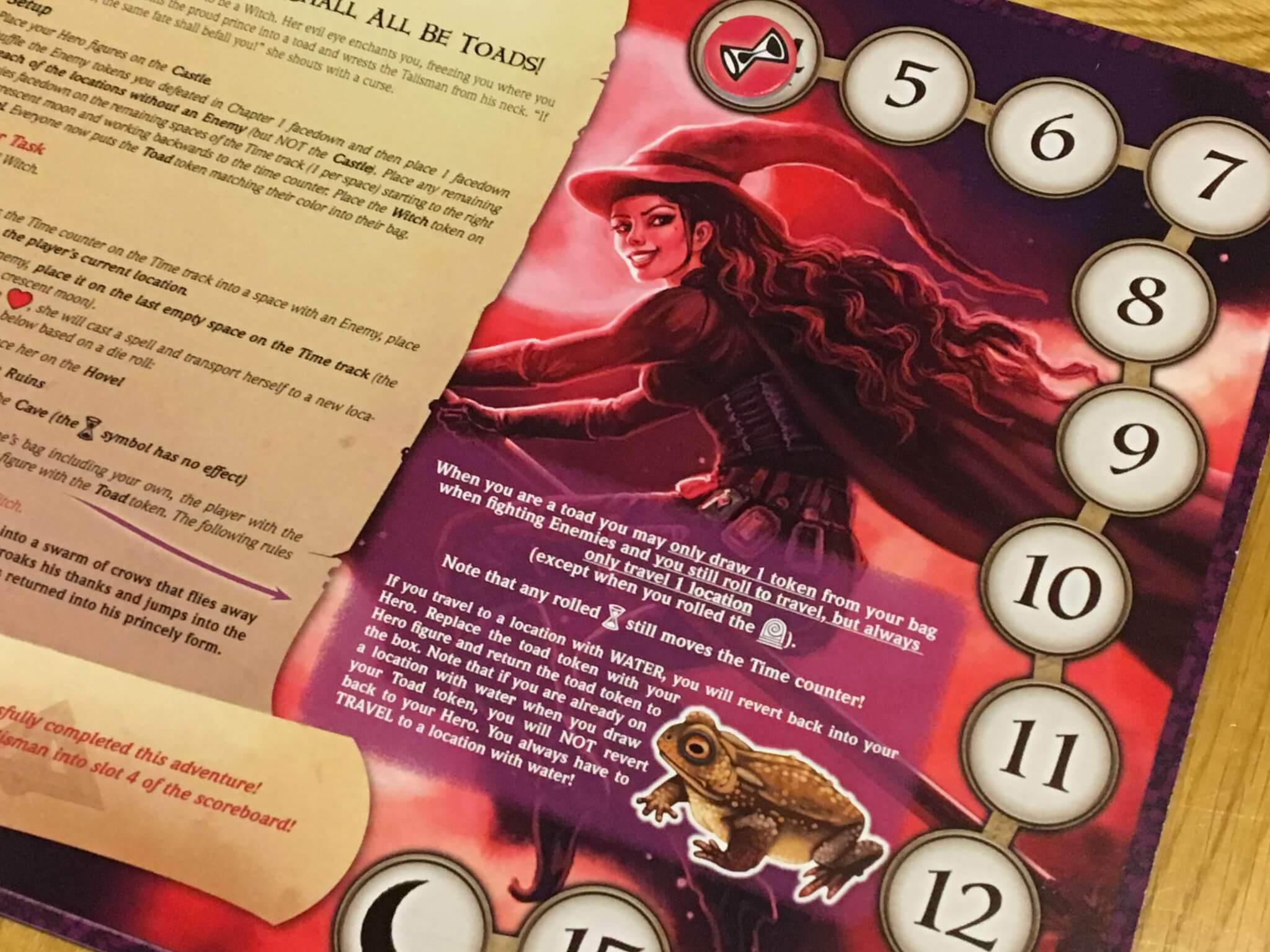Talisman: Legendary Tales — A game of Luck
Talisman: Legendary Tales is aimed at a new, much younger audience and even though it is faster and simpler than the original, it also manages to be way, way smarter.
When you mention Talisman to a modern board gamer, you’ll likely get one of two reactions, depending on their age and exposure. Older players who grew up playing Talisman in the 1980’s will stare dreamily into space whilst fondly remembering it. Younger gamers, who may never even have played it, will scoff at the basic roll and move gameplay and total reliance on luck. Talisman: Legendary Tales may well be the way to bring these two together.

Anyone who does remember the original Talisman will be aware that it was essentially a game of luck. The players would move their pieces around a large square board, collecting items, companions and other regalia before gaining access to the next ring of spaces. Expansions added new board sections and gave some choice, but basically, if a player rolled a six, then they must move six spaces in either direction (or onto one of the expansion board tracks) and this came with issues.

Notably, the choices that players made were not at all within their control most of the time – the choice between a rock and a hard place (or being turned into a toad) is no choice at all, and Talisman has since become the classic example of how not to make a modern board game. In Talisman: Legendary Tales, a dice is still used to determine movement, but players can move less if they choose to, and the game is wholly cooperative, which adds in some interesting dynamics.
There’s a story to keep up with, should you so wish, and the overarching idea is that players (ideally groups comprising of both old and young gamers) will journey through a handful of prebuilt scenarios in search of The Crown of Command. This is achieved by moving around the modular board, facing down monsters and opening treasure chests. The movement dice does have a time symbol face, and time is tracked in each scenario with some simple effects occurring at different points.

The main aspect of gameplay, that happens outside of the dice rolling and movement, is based on a bag building mechanic that I actually quite like. When a monster is faced, the player in combat must draw tokens from their personal bag (complete with a little tag showing their character) until the monster is defeated. Some of these tokens show an option for aid, allowing one player to help another character in these fights, which adds to the feeling of the game as a team activity.

None of this is rocket science — you’ll simply need to assess the likelihood of being able to defeat the current enemy based on what you know is in your bag. A given character might have a predisposition to generating might, or magic, for example, and other of those things could be useful for the current situation, or not. As players gain items and suchlike, they can build their bag out to be more powerful or specific.
If played from the perspective of an adult gamer with a lot of experience in heavier games, I am bound to be quite critical of Talisman: Legendary Tales. It’s simple, easy to beat and super straightforward to the point of dullness, but I have to remember; this game is not designed for me. It’s designed for my kids, or for families who haven’t experienced many board games who want to spend time together. In that regard, Talisman: Legendary Tales won’t blow anyone away, but it does create a sense of being on a magical adventure that young children can really get behind.

There are several things that support the family level suitability, which I think should be commended. Firstly, there are the components. In stark contrast to the dark high fantasy of the original Talisman, Talisman: Legendary Tales uses bright, bold characters penned in a cartoon style. What’s more, the game goes to great lengths to ensure inclusivity, with male and female presented characters as well as numerous races (both human and otherwise) represented.
The components, in general, will be highly appealing to younger gamers. There’s the characters that I have just mentioned of course, but the board itself is made of big, bold pieces that are filled with whimsy. Tokens are thick, robust and clear, and the scenario sheets that show the goblins, fairies and other creatures are all highly appealing to the eye.

The component quality is generally high (the bags from which tokens are drawn feel a bit cheap, but everything else is alright) and there could do with being a few more scenarios, but as a product, I am happy with it. In direct comparison to Talisman, Talisman: Legendary Tales is about a quarter as long, way less random and wholly more fun, but then again, it’s so wildly different that it doesn’t really bear comparison.
Talisman: Legendary Tales is likely to languish in the BoardGameGeek rankings forever more, and it runs the risk of being forgotten because BGG is a ranking tool for dedicated gamers. In my opinion, if you rate Talisman: Legendary Tales as a product that can bring families together, get them talking and working together, it’s a much more powerful tool than you might expect and it could be worth a look if you have children between the ages of about six and ten years old.
You can purchase Talisman: Legendary Tales on Amazon or 365 Games.

Comments are closed.